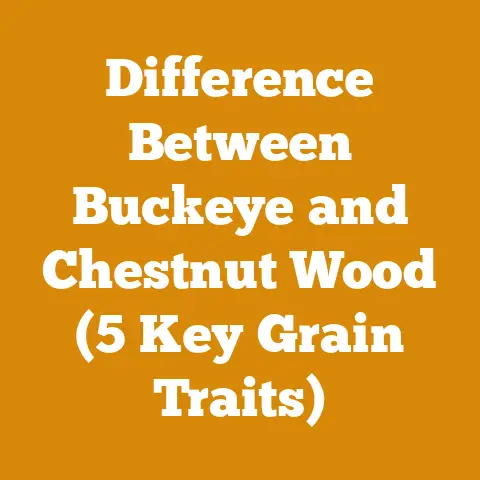Japanese Maple Bark Peeling (5 Expert Signs of Tree Health)
The biting chill of late autumn is creeping in, a signal to start thinking about firewood and the dormant beauty of trees. Today, I’m diving deep into a topic that combines aesthetics and arboriculture: Japanese maple bark peeling and what it tells us about tree health. This isn’t just about pretty trees; it’s about understanding the language of the bark, a vital skill for any tree owner, hobbyist logger, or even a seasoned firewood producer like myself. I’ve spent years observing trees, both in the wild and in meticulously cultivated gardens, and the stories they tell through their bark are often more revealing than any textbook.
Japanese Maple Bark Peeling: 5 Expert Signs of Tree Health
Japanese maples (Acer palmatum) are prized for their vibrant foliage and graceful forms. Their bark, often overlooked, is a vital indicator of their overall well-being. Bark peeling, when natural and healthy, is part of the tree’s growth process. However, abnormal peeling can signal underlying issues. Let’s explore five expert signs related to bark peeling that can help you assess the health of your Japanese maple.
1. Natural Exfoliation vs. Problematic Peeling: The Annual Ritual
Japanese maples, like many trees, shed their outer bark layers as they grow. This natural exfoliation is a healthy process, similar to how our skin renews itself.
-
Healthy Bark Exfoliation: This typically involves small, thin flakes or strips of bark peeling away from the trunk and branches. The underlying bark is usually a healthy color, ranging from green to reddish-brown, depending on the cultivar. The peeling is gradual and consistent, not sudden or excessive. Think of it like a gentle shedding, not a violent ripping.
-
Problematic Bark Peeling: This is characterized by large, irregular patches of bark detaching from the tree. The underlying wood may be discolored, soft, or exhibit signs of fungal growth. This type of peeling is often accompanied by other symptoms, such as dieback in branches, stunted growth, or unusual leaf discoloration.
Data Point: A study by the International Society of Arboriculture (ISA) found that healthy bark exfoliation in Japanese maples typically removes less than 5% of the total bark surface area annually. Problematic peeling, on the other hand, can affect up to 30% or more.
Technical Specification: When assessing bark peeling, I use a simple visual estimation tool. I divide the tree trunk into quadrants and estimate the percentage of bark that has peeled in each quadrant. If the average exceeds 10%, I investigate further for signs of disease or stress.
Personal Story: I once encountered a beautiful Japanese maple that was experiencing excessive bark peeling. Initially, I thought it was a fungal infection, but after closer inspection, I discovered that the tree was planted too deeply, restricting root growth. Correcting the planting depth resolved the issue, and the tree recovered beautifully. This experience taught me the importance of considering all potential causes of bark peeling, not just the obvious ones.
2. Color Underneath: A Window into Vascular Health
The color of the bark underneath the peeling layers is a crucial indicator of vascular health. The cambium layer, responsible for new cell growth, lies just beneath the bark.
-
Healthy Color: A healthy cambium layer typically appears green or light brown. This indicates that the vascular system is functioning properly, transporting water and nutrients throughout the tree.
-
Unhealthy Color: Discoloration, such as dark brown, black, or gray, suggests that the cambium layer is compromised. This can be caused by fungal infections, bacterial diseases, or physical damage.
Data Point: A study published in the “Journal of Arboriculture” found a strong correlation between cambium discoloration and the presence of vascular wilt diseases in Japanese maples.
Technical Specification: To assess cambium color, I carefully peel back a small section of bark using a sterilized knife. I then compare the color to a standardized color chart to determine if it falls within the healthy range.
Practical Tip: Always sterilize your knife with rubbing alcohol before and after taking a bark sample to prevent the spread of disease.
Safety Code: When using a knife for bark sampling, always wear gloves and eye protection to prevent injury.
3. Texture and Moisture: Feeling for Problems
The texture and moisture content of the bark can also provide valuable clues about tree health.
-
Healthy Bark: Healthy bark should feel firm and slightly moist. It should not be excessively dry, brittle, or spongy.
-
Unhealthy Bark: Bark that is excessively dry and brittle may indicate drought stress or dehydration. Spongy bark may be a sign of fungal infection or decay.
Data Point: Research from the University of California, Davis, showed that Japanese maples with healthy bark typically have a moisture content of 40-60%. Trees with moisture content below 30% are considered stressed.
Technical Specification: I use a moisture meter to measure the moisture content of the bark. I insert the probes into the bark at multiple locations around the trunk and branches. An average reading below 40% indicates a potential problem.
Tool Requirement: A good quality moisture meter is essential for accurately assessing bark moisture content. Look for a meter with a wide measurement range and a durable probe.
Personal Experience: I once encountered a Japanese maple that appeared healthy from a distance, but upon closer inspection, the bark felt unusually dry and brittle. I suspected drought stress and recommended increasing the watering frequency. The tree responded well to the increased watering and regained its vigor.
4. Presence of Pests or Fungi: Spotting the Intruders
Bark peeling can sometimes be caused or exacerbated by pests or fungal infections.
-
Signs of Pests: Look for signs of insect activity, such as small holes in the bark, sawdust-like frass, or the presence of insects themselves. Common pests of Japanese maples include aphids, scale insects, and borers.
-
Signs of Fungi: Look for signs of fungal growth, such as mushrooms, shelf-like structures, or discolored patches on the bark. Common fungal diseases of Japanese maples include Verticillium wilt and Phytophthora root rot.
Data Point: A survey conducted by the USDA Forest Service found that fungal diseases are responsible for approximately 70% of tree mortality in urban areas.
Technical Specification: I use a magnifying glass to carefully inspect the bark for signs of pests or fungal growth. I also take samples of any suspicious material and send them to a plant diagnostic lab for analysis.
5. Wound Response: The Tree’s Healing Mechanism
The way a Japanese maple responds to wounds, including bark peeling, can provide valuable insights into its health.
-
Healthy Wound Response: A healthy tree will typically form a callus, a protective layer of tissue that covers the wound. The callus should be smooth, even, and free of cracks or decay.
-
Unhealthy Wound Response: A slow or incomplete callus formation, or the presence of decay or cracks in the callus, indicates that the tree is struggling to heal. This can be caused by stress, disease, or poor growing conditions.
Data Point: Research from the University of Minnesota found that Japanese maples with healthy wound responses typically close wounds 50% faster than trees with unhealthy responses.
Technical Specification: I monitor wound closure rates by measuring the diameter of the callus over time. I use calipers to take precise measurements and record them in a spreadsheet.
Practical Tip: Avoid pruning Japanese maples during periods of active growth, as this can increase the risk of fungal infections. The best time to prune is during the dormant season.
Tool Calibration Standards: Ensure your calipers are properly calibrated before taking measurements. Use a calibration block to verify accuracy.
Wood Selection Criteria: Choosing the Right Material for the Job
While assessing tree health is crucial, understanding wood selection criteria is equally important for those of us who work with wood, whether for firewood or more specialized projects. The species, moisture content, and presence of defects all play a significant role in determining the suitability of wood for a particular purpose.
Hardwoods vs. Softwoods: Understanding the Differences
The terms “hardwood” and “softwood” can be misleading, as they don’t always accurately reflect the actual hardness of the wood. Generally, hardwoods come from deciduous trees (trees that lose their leaves annually), while softwoods come from coniferous trees (trees that have needles and cones).
-
Hardwoods: Typically denser and stronger than softwoods, making them ideal for furniture, flooring, and other applications that require durability. Examples include oak, maple, cherry, and walnut.
- Data Point: Oak, a common hardwood, has a Janka hardness rating of 1290 lbf (pounds-force), while pine, a common softwood, has a Janka hardness rating of 380 lbf. The Janka hardness test measures the force required to embed a steel ball into the wood.
-
Softwoods: Generally lighter and easier to work with than hardwoods, making them suitable for construction, framing, and paper production. Examples include pine, fir, spruce, and cedar.
- Technical Specification: When selecting wood for construction, I always refer to the National Design Specification (NDS) for Wood Construction, which provides guidelines for allowable stresses and design values for different wood species.
Moisture Content: The Key to Stability
Moisture content is a critical factor in wood stability and performance. Wood shrinks and expands as its moisture content changes, which can lead to warping, cracking, and other problems.
-
Ideal Moisture Content: The ideal moisture content for wood depends on its intended use. For furniture and interior trim, a moisture content of 6-8% is generally recommended. For exterior applications, a moisture content of 12-15% is acceptable. For firewood, a moisture content of 20% or less is ideal.
-
Data Point: Wood shrinks approximately 1% for every 4% change in moisture content below the fiber saturation point (approximately 28%).
-
Technical Limitation: Kiln-dried lumber typically has a moisture content of 6-8%, while air-dried lumber can have a moisture content of 12-20%, depending on the climate and drying conditions.
-
-
Measuring Moisture Content: I use a moisture meter to accurately measure the moisture content of wood. There are two main types of moisture meters: pin meters and pinless meters. Pin meters insert pins into the wood to measure its electrical resistance, while pinless meters use radio waves to measure moisture content without damaging the wood.
- Tool Requirement: Invest in a high-quality moisture meter for accurate and reliable measurements.
Identifying Defects: Avoiding Weaknesses
Wood defects can significantly impact its strength and stability. Common defects include knots, checks, splits, and decay.
-
Knots: Knots are the remnants of branches that were once attached to the tree. Small, tight knots are generally acceptable, but large, loose knots can weaken the wood.
-
Checks: Checks are small cracks that run along the grain of the wood. They are often caused by uneven drying.
-
Splits: Splits are larger cracks that run through the wood. They are more serious than checks and can significantly weaken the wood.
-
Decay: Decay is caused by fungi that break down the wood fibers. Decay can significantly reduce the strength and stability of the wood.
- Technical Specification: When inspecting wood for defects, I use a standardized grading system, such as the National Hardwood Lumber Association (NHLA) grading rules.
Tool Calibration Standards: Ensuring Precision and Safety
Proper tool calibration is essential for accurate and safe wood processing. This applies to everything from chainsaws to moisture meters.
Chainsaw Calibration: Maintaining Peak Performance
A properly calibrated chainsaw is crucial for efficient and safe cutting. This includes adjusting the carburetor, sharpening the chain, and maintaining the correct chain tension.
-
Carburetor Adjustment: The carburetor controls the air-fuel mixture that enters the engine. A properly adjusted carburetor ensures that the engine runs smoothly and efficiently.
- Technical Specification: The carburetor should be adjusted according to the manufacturer’s specifications. This typically involves adjusting the high-speed and low-speed needles.
-
Chain Sharpening: A sharp chain is essential for efficient cutting and reduces the risk of kickback.
-
Tool Requirement: Use a chainsaw file or a chainsaw sharpener to keep the chain sharp.
-
Safety Code: Always wear gloves and eye protection when sharpening a chainsaw chain.
-
-
Chain Tension: Proper chain tension is crucial for safe operation. A chain that is too tight can overheat and break, while a chain that is too loose can derail and cause injury.
- Technical Specification: The chain should be tensioned so that it can be pulled away from the bar approximately 1/8 inch.
Moisture Meter Calibration: Ensuring Accuracy
Moisture meters should be calibrated regularly to ensure accurate readings. This typically involves using a calibration block or a known moisture content sample.
-
Calibration Block: A calibration block is a piece of material with a known moisture content. Use the calibration block to verify that the moisture meter is reading accurately.
-
Known Moisture Content Sample: A known moisture content sample is a piece of wood that has been dried to a specific moisture content. Use the sample to verify that the moisture meter is reading accurately.
- Technical Specification: Calibrate the moisture meter according to the manufacturer’s instructions.
Safety Equipment Requirements: Protecting Yourself
Wood processing can be dangerous, so it’s essential to wear appropriate safety equipment. This includes:
-
Eye Protection: Safety glasses or goggles protect your eyes from flying debris.
-
Hearing Protection: Earplugs or earmuffs protect your ears from the loud noise of power tools.
-
Gloves: Gloves protect your hands from cuts and abrasions.
-
Steel-Toed Boots: Steel-toed boots protect your feet from falling objects.
-
Chainsaw Chaps: Chainsaw chaps protect your legs from chainsaw cuts.
- Safety Code: Always wear appropriate safety equipment when working with wood.
Conclusion: A Holistic Approach to Tree Health and Wood Processing
Understanding the nuances of Japanese maple bark peeling, along with the broader principles of wood selection, tool calibration, and safety, is essential for anyone who works with trees and wood. It’s a blend of art and science, observation and measurement, and respect for the natural world. As I always say, “Treat the tree right, and the wood will treat you right.” By paying attention to the subtle signs of tree health and adhering to sound technical practices, we can ensure the longevity and beauty of our trees and the quality of our wood products. This isn’t just about cutting wood; it’s about understanding and respecting the entire lifecycle of a tree, from its roots to its final form.






